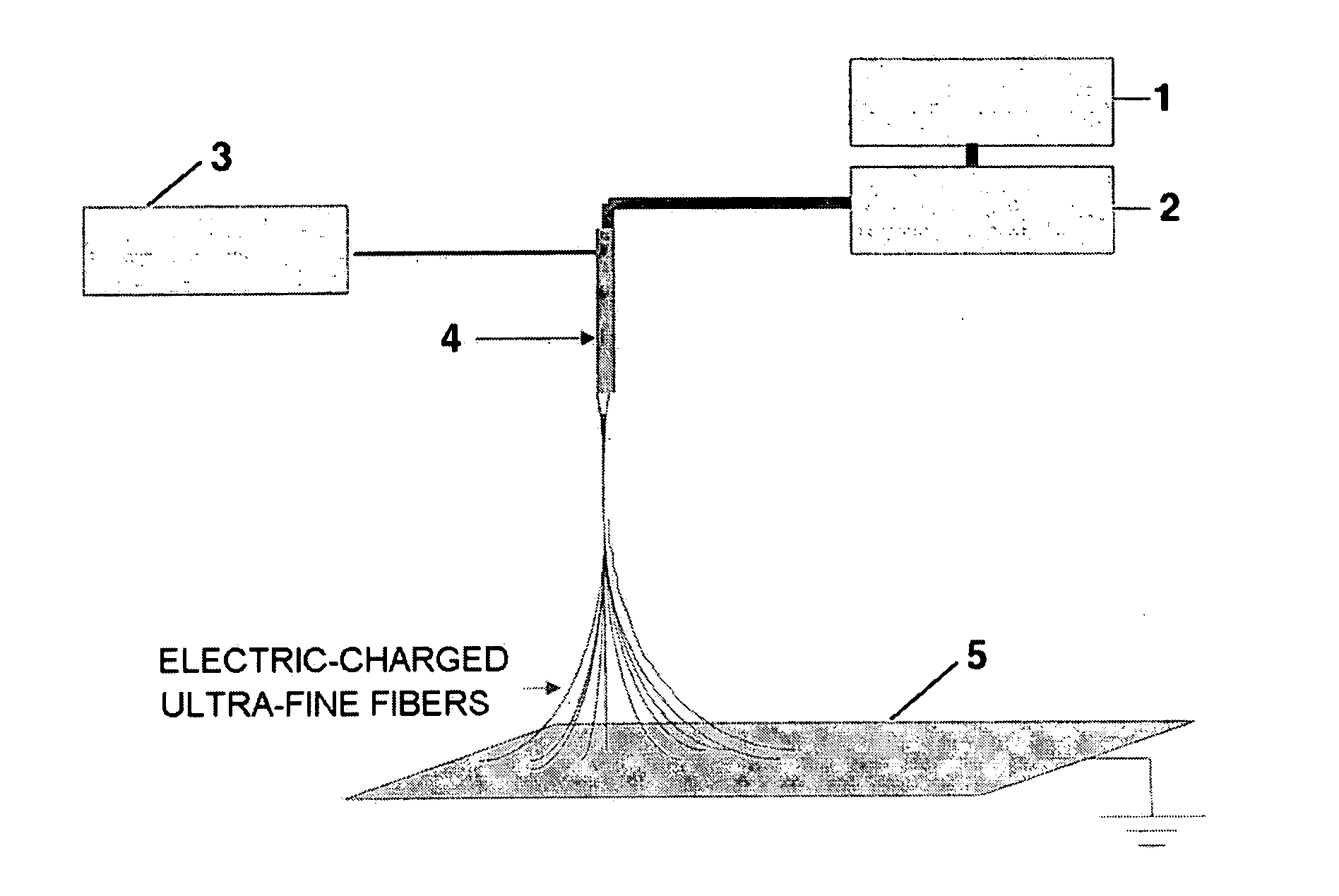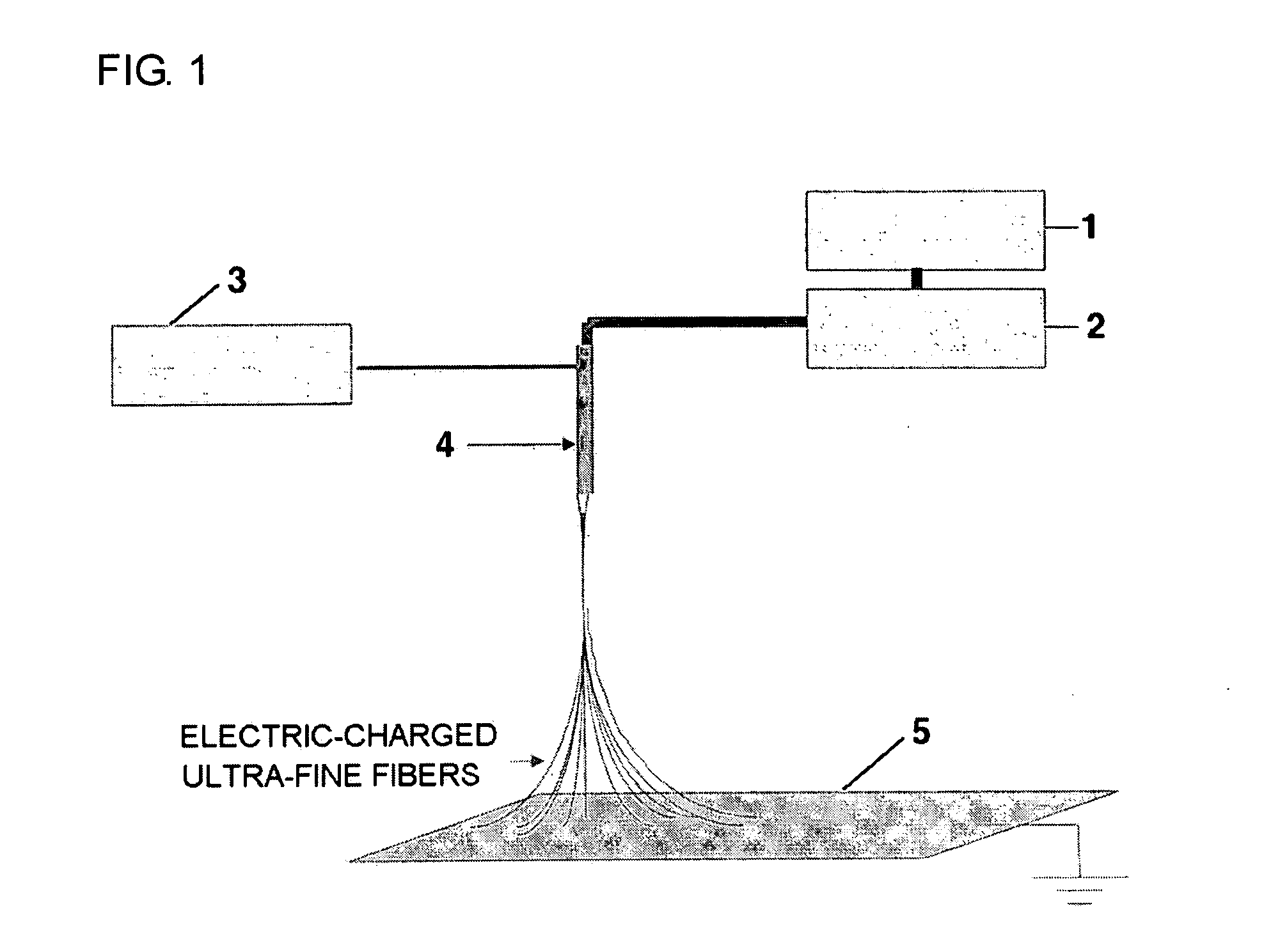Lithium secondary battery comprising fine fibrous porous polymer membrane and fabrication method thereof
- Summary
- Abstract
- Description
- Claims
- Application Information
AI Technical Summary
Benefits of technology
Problems solved by technology
Method used
Image
Examples
example 1
Preparation of a Separator / Electrode Composite in Which an Ultra-Fine Fibrous Porous Polymer Membrane is Combined onto the Electrode
example 1-1
[0078] 20 g of PVdF (Kynar 761) was added to 100 g of dimethylacetamide / acetone mixture, and the resulting mixture was stirred at room temperature to give a clear polymeric solution. The resulting polymeric solution was introduced into a barrel of an electrospinning apparatus and then discharged onto a metal collector plate 5 at 100 μl / min with a constant quantity pump 2. At the same time, by applying 9 kV of electric charge to a spinning nozzle 4, an ultra-fine fibrous porous polymer membrane 6 of 50 μm in thickness was formed onto the earthed metal conveyer collector plate 5 that was moving at 1 m / min.
[0079] Next, as shown in FIG. 3, on the end portion of the conveyer, the collector plate, on which the fibrous polymer membrane was stacked, was adhered onto the surface of a cathode or an anode, heat-laminating process was performed with a roller 7 which was pre-heated at about 100° C., the electrode was then separated from the collector plate, to obtain a fibrous membrane / electrod...
example 1-2
[0081] 10 g of PVdF (Kynar 761) and 10 g of PAN (obtained from Polyscience Company, molecular weight of 150,000) were added into 100 g of dimethylacetamide, and the resulting mixture was stirred at room temperature for 24 hours to give a clear polymeric solution. Using the polymeric solution, a fibrous membrane / cathode composite in which an ultra-fine fibrous porous polymer membrane was combined with one side of LiCoO2 cathode and a fibrous membrane / anode composite in which an ultra-fine fibrous porous polymer membrane was combined with one side of graphite anode were respectively prepared in the same manner as in Example 1-1.
[0082] Using the same polymeric solution, a fibrous membrane / cathode composite in which an ultra-fine fibrous porous polymer membrane was combined with both sides of LiCoO2 cathode and a fibrous membrane / anode composite in which an ultra-fine fibrous porous polymer membrane was combined with both sides of graphite anode were respectively prepared in the same m...
PUM
 Login to View More
Login to View More Abstract
Description
Claims
Application Information
 Login to View More
Login to View More - R&D
- Intellectual Property
- Life Sciences
- Materials
- Tech Scout
- Unparalleled Data Quality
- Higher Quality Content
- 60% Fewer Hallucinations
Browse by: Latest US Patents, China's latest patents, Technical Efficacy Thesaurus, Application Domain, Technology Topic, Popular Technical Reports.
© 2025 PatSnap. All rights reserved.Legal|Privacy policy|Modern Slavery Act Transparency Statement|Sitemap|About US| Contact US: help@patsnap.com



